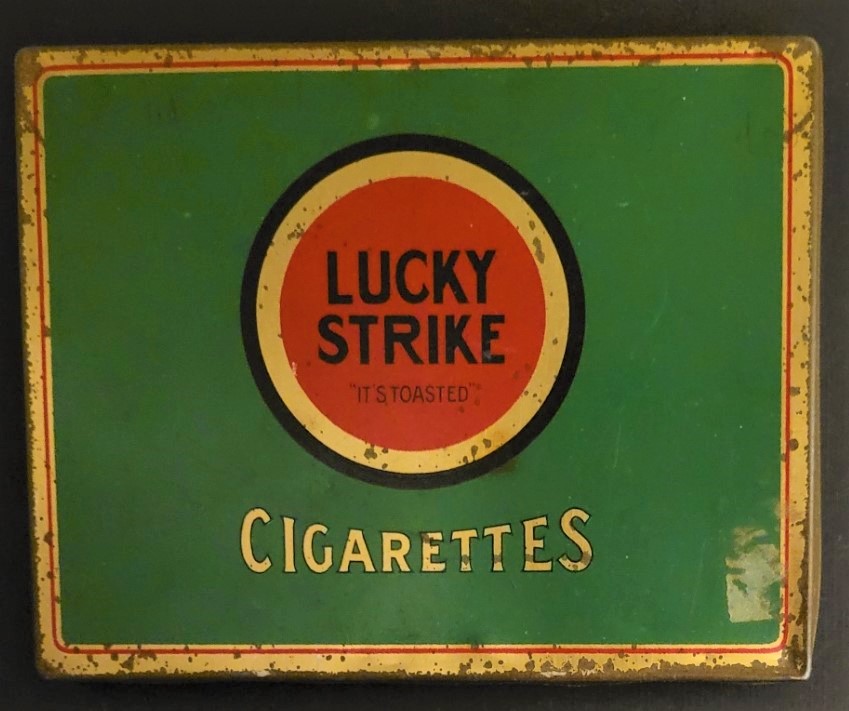
Lucky Strike Flat Fifty
Stories in a tin box
I love this slim little box! Fitted perfectly inside it were greeting cards my Great Grandmother had saved. (You can see them in my previous blog post.) Great Grandmother died in 1940. The cards date from the 1930s, and we know the box does too, because in 1942, Lucky Strike changed the beautiful deep green packaging to a white pack.
Lucky Strike cigarettes were THE top-selling brand in the USA in the 1930s and ‘40s. They were suddenly on our radar again recently because of the hit TV series Mad Men. The lead character, Don Draper, smoked “Luckies” and the brand was a major client of his fictional 1960s advertising firm. If you were a Mad Men fan, Luckies were up close in your living room for a lot of years.
What I didn’t know was that Lucky Strike in the 1960s had been my husband’s brand too. As soon as he saw the box, he said, “It’s toasted!” followed by the cryptic “L.S./M.F.T.”
“What’s that?” I asked. “ ‘Lucky Strike means fine tobacco’,” he answered. So their branding has stuck with him through many decades – and Lucky Strike excelled at branding!
You can clearly see “IT’S TOASTED” on my box, under the words Lucky Strike. It’s a slogan they adopted in 1917, suggesting that toasting the tobacco brought out the flavour, as compared to sun-drying. The “L.S./M.F.T.” was not added to the packages until 1944. Another Lucky Strike slogan from 1944 was “So round, so firm, so fully packed, so free and easy on the draw.” When I was a young kid, I remember my father who, having seen a buxom young lady, turned to my mother and said, “So round, so firm, so fully packed.” Mom gave him a look, and with a twitch of her head in the direction of my tender ears, said warningly, “Jamie. . .”.
Looking inside the Lucky Strike box, Harvey pointed out that Luckies were short cigarettes. They were never King Sized. Two rows would have fit into this box, side by side. And sure enough, these cigarette tins are called “Flat Fifties”. Each contained one layer of two rows of cigarettes for a total of 50 cigarettes.
Later, when Lucky Strike moved to cardboard packs, the packs were small, the cool kind that the Fonz might have tucked under his t-shirt sleeve in the 1950s.
Lucky Strike began as chewing tobacco sold in plugs in 1871 by the R.A.Patterson Tobacco Company in Richmond, Virginia. In 1905, the American Tobacco Company bought the brand as can be seen above on the inside of the tin’s cover. They began manufacturing cigarettes in 1917 as a challenge to R.J.Reynolds’ Camel cigarettes. (More about R.J. in a minute.) The name Lucky Strike was inspired by the gold rushes of that early era but the name fueled an urban myth that it referred to a marijuana cigarette being in occasional packs! Lucky strike!
Also inside the tin cover is a logo of an Indian Chief in full head-dress (above). I have not found any concrete information, but it might be a hold-over from that first 1871 R.A.Patterson Company who established an Indian head trademark called “Great Chief Powhatan”. Powhatan was the leader of some 30 tribes (20,000 people) in what is now Virginia when the first white settlers arrived. He sent an ambassador to the new colony to seek peace, and allowed food to be delivered, which helped keep the struggling colonists alive. White encroachments on his territory disrupted the truce and led to attacks on both sides. Powhatan was also the father of Pocahontas whose marriage to a white colonist led to another period of peace. Her white husband, John Rolfe, had watched the Powhatan people growing tobacco and began growing it too for commercial export.
Presumably a logo of an Indian Chief was a nod to this history of the tobacco industry, as well as an implication of “all-American”, “traditional” and “natural”. The Smithsonian National Museum of the American Indian’s recent “Americans” exhibit points out that “Indians are less than one percent of the USA population; yet images and names of Indians are everywhere” – sports teams, food and cleaning products, sewing notions as seen below on a needle book that was in my grandmother’s sewing basket. Strangely, you will notice that the needle book is marked “Made in Czechoslovakia”!
But back to the Lucky Strike tin: The translucent papers that were on either side of the cigarettes are still in place, above and below Grandmother’s stack of greeting cards. When I first opened the box, I spotted a small trading card tucked behind the paper. It commemorated the burning of the Hindenburg in 1937, and the back of the small 5 x 7.5 cm card is printed like a front-page newspaper.
At first I thought it must date from 1937 and that Great Grandmother had kept it. But no. It is from a 1954 set of Topps trading cards called “Scoops”, so some other family member thought it important enough to save in this box. The Scoops series covered a great variety of major news headlines and historical events from all different decades. Topps commissioned new paintings of each event for their Scoops series.
What Grandmother did save was a calendar page from January 1930, folded and tucked under the greeting cards. Someone had thoughtfully put smiley faces in each of the date circles. On the back of it, Great Grandmother has noted various names in pencil, each with a number after it. Perhaps local people who had ordered some of her needlework. I recognize her handwriting from old letters.
The bottom of the tin is quite marked from long years of use, but it has another rendition of the Indian Chief logo and a guarantee: “Guaranteed by The American Tobacco Co. Incorporated – which means that if this package for any reason is unsatisfactory you can get your money back from the dealer.” It also mentions Factory No. 649 , 1st District New York and the number 50 (presumable the count of the cigarettes in the tin), and has the following notice: “The manufacturer of the Cigarettes herein contained has complied with all the requirements of law. Every person is cautioned not to use either this package for Cigarettes again or the stamp thereon again nor to remove the contents of this package without destroying said Stamp under the penalties provided by the law in such cases.”
In the very bottom of the tin are carefully folded pieces of silver paper, probably the original foil that was around the cigarettes. Great Grandmother herself smoked a pipe rather than cigarettes, so someone saved the paper for her. It feels much softer and heavier in the hand than today’s aluminum foil. I wonder if this is actual tin-foil as compared to the aluminum foil that was to come into widespread use very soon.
The tin foil story is all about R.J. Reynolds of Camel cigarette fame. In 1913 he had developed the first packaged cigarettes at a time when smokers were using loose tobacco and papers and making “roll-your-owns”. R.J. had a nephew, Richard “R.S.” Reynolds working for him. When Richard decided to go into business for himself, R.J. loaned him the money to form the U.S. Foil Company. What did they make? They rolled tin and lead foil wrappers for the newly invented cigarettes and for candy wrappers. (Lead candy wrappers? Ah, the good old days!)
Richard didn’t play favorites – he provided tin foil to the American Tobacco Co. for Lucky Strikes, as well as to his uncle R.J. for Camels. In the mid-1930s, Richard Reynolds was shown a new type of foil made from aluminum, and it wasn’t long before it pretty much replaced the old foil made of tin. By 1947, Reynolds Wrap was in most American kitchens.
You can read more about the 1954 Topps Scoops trading cards HERE.
You can read more about Great Grandmother Feltmate HERE.

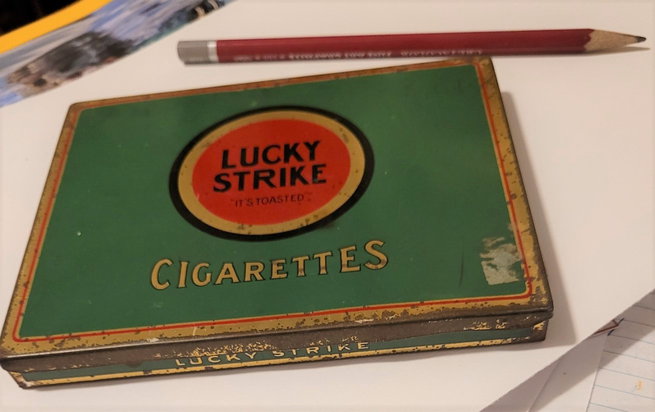
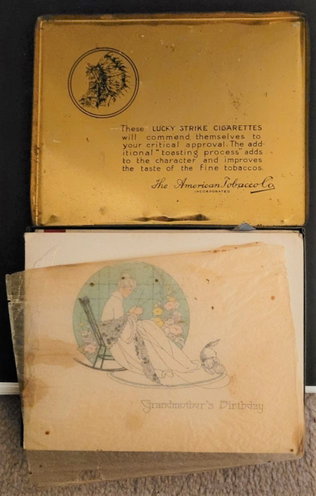
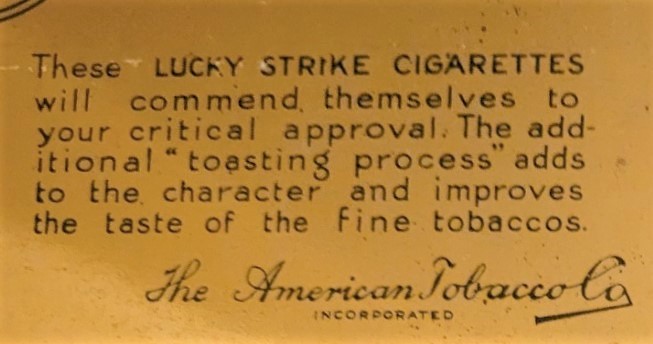
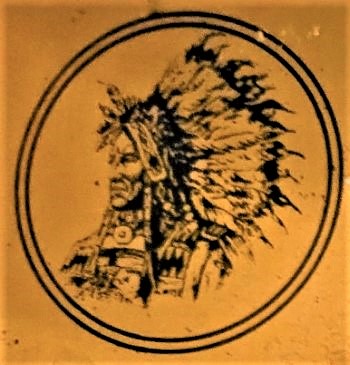
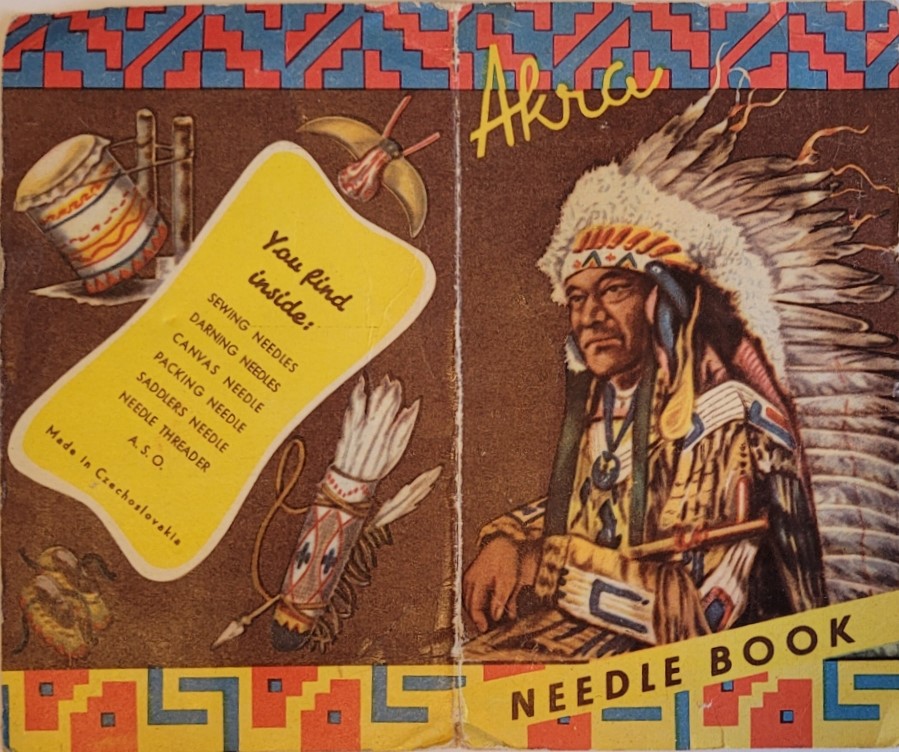
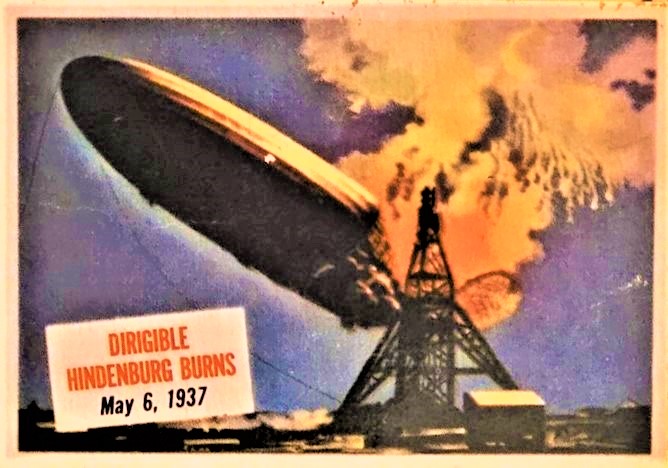
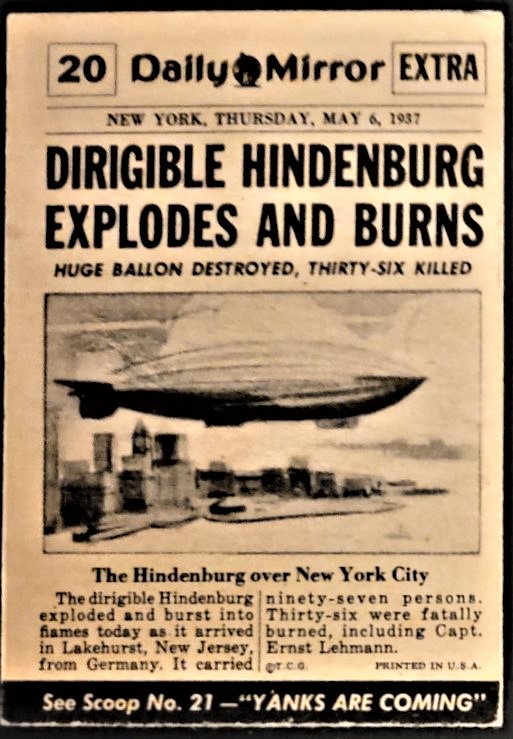
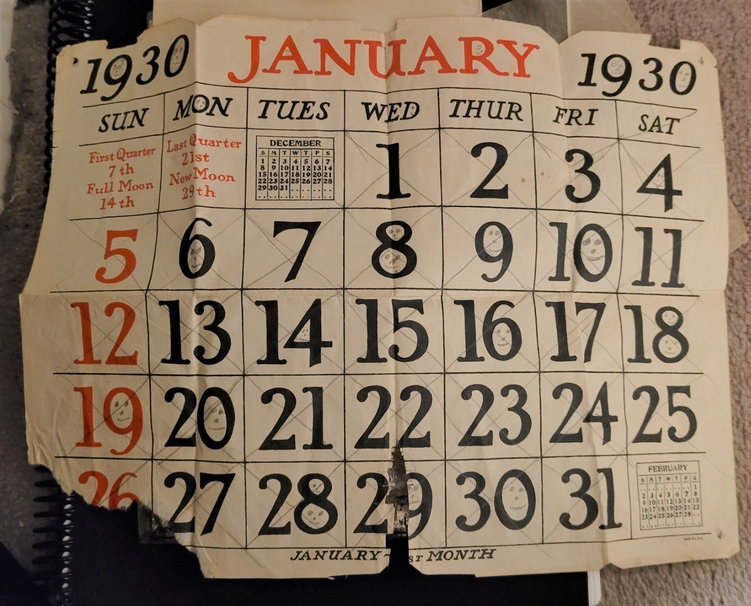
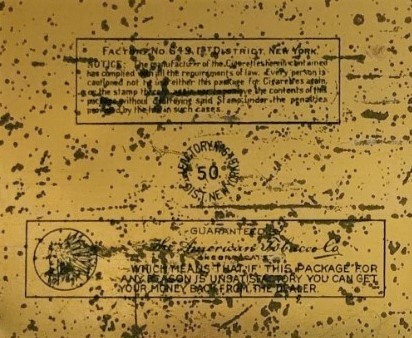
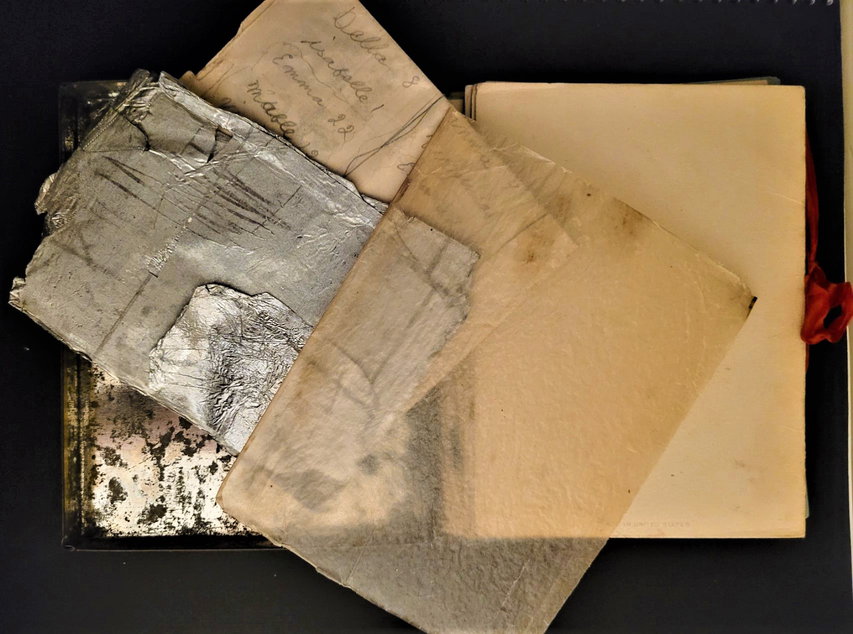
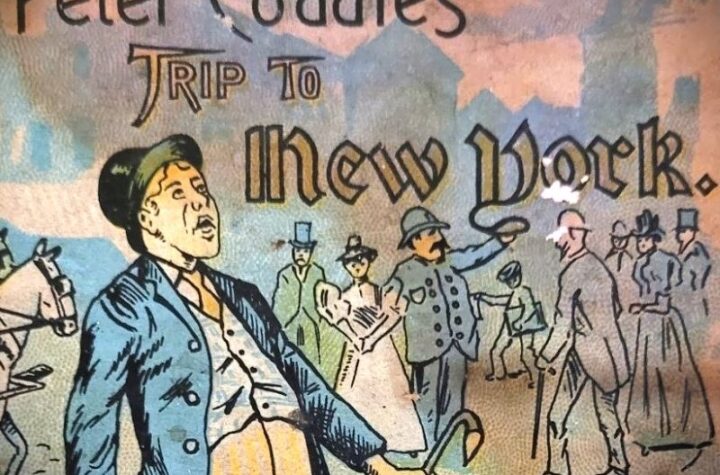
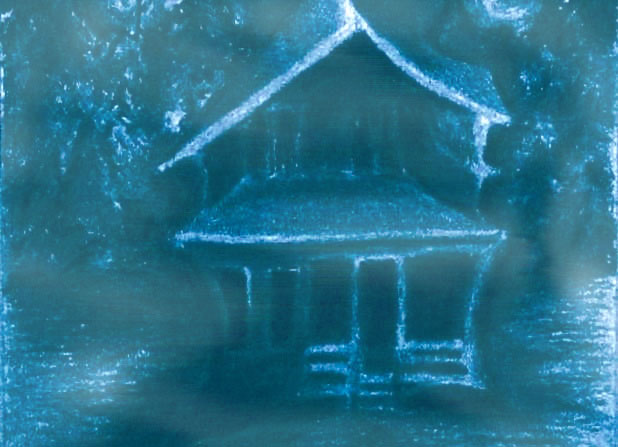
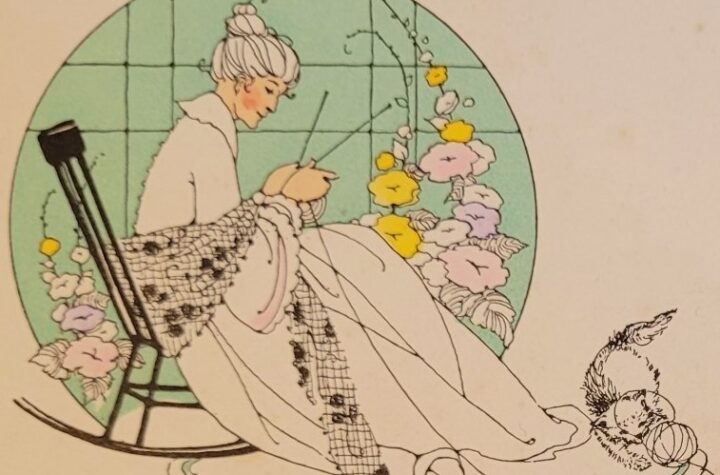
I enjoyed your brief history of american advertising and marketing. Lucky Strikes were very smartly produced, they were ‘cool’, though in a body-destroying manner – but looked fashionable and small enough to hide from ones;’ parents, for us ‘kids’ at the time. You present it in a personal and readable manner, I always enjoy the real connections you express with your family.. It must be a thrill to find such a ‘box’ of hidden treasure.
Thank you, Harvey! So glad you enjoyed it!